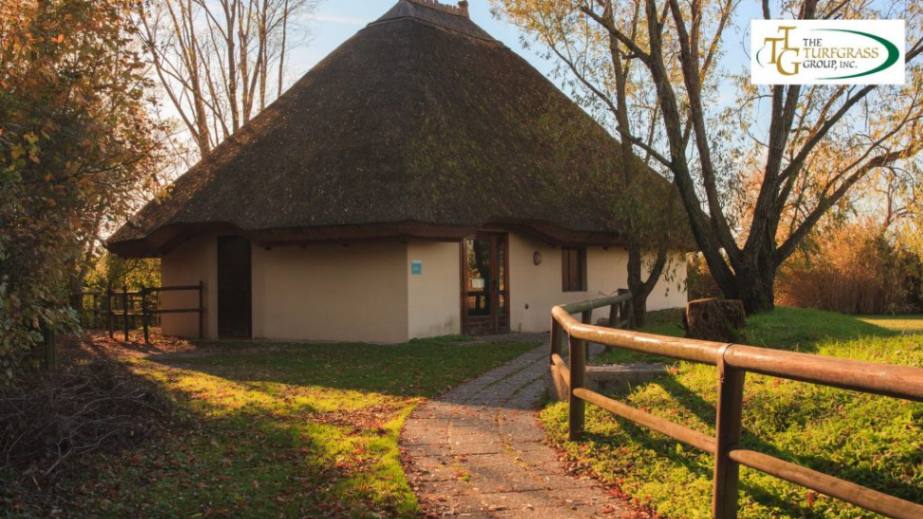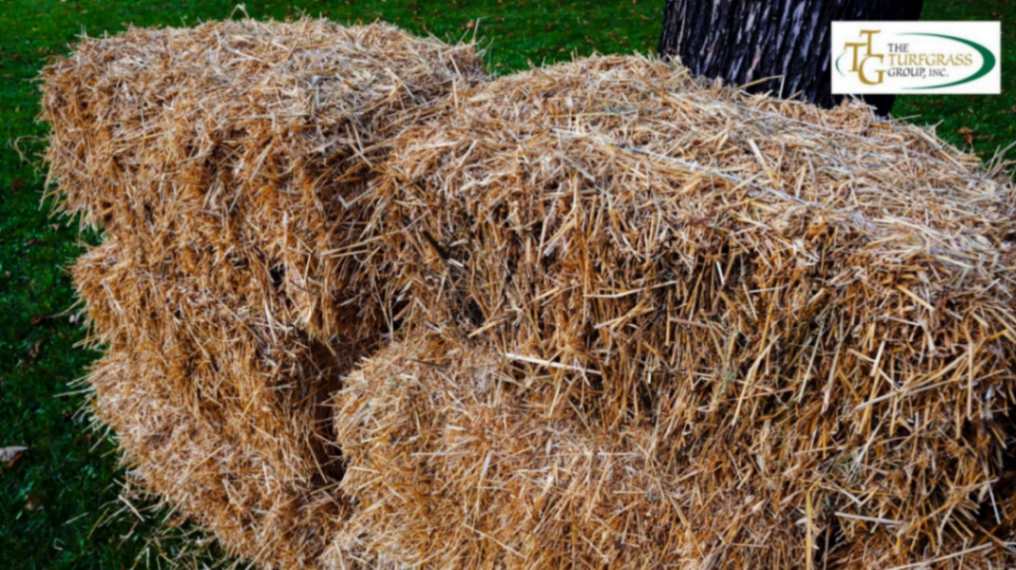
Among the numerous objectives for homeowners relative to their lawn is having a well-dense and healthy green plot, free of excessive Zoysia Grass Thatch.
Some reasons people have come to love Zoysia grass include drought resistance, a tight density, and warm-climate adaptability.
Despite its many positive aspects, Zoysia grass has one vulnerability called thatch, which can jeopardize the health of your lawn.
In this extensive guide, we will go over everything you need to know about handling thatch on Zoysia grass, starting with its formation, impact, and effective ways to manage and prevent thatch buildup.
Understanding Thatch in Zoysia Grass
What is Thatch?
Thatch is the accumulation of organic matter between the soil and the green, leafy portion of the grass.
It contains living and dead roots, stems, and other plant residue.
A minimal amount of thatch is considered normal and helpful in providing a cushion under foot traffic and aiding in watering.
Too much thatch could be wrong and harmful to the grass.
For instance, on dense, slow-growing grass like Zoysia, the control of thatch often describes the health and appearance of the lawn.
This mainly indicates poor grass health due to the blocking of water, nutrients, and air from accessing the roots of the grass by thatch accumulation.
How is Thatch Formed?

Thatch happens when the organic material, dead grass, and roots, accumulates in the lawn before decomposing.
Naturally, these various organic parts of the grass are decomposed by microorganisms living in the soil.
However, the condition where the accumulation rate becomes higher than decomposition leads to thatch formation.
Such factors that contribute to the imbalance include:
Grass Type
Thatched grass is one of the characteristics exhibited by Zoysia due to the slowness of its decomposition process.
Soil Conditions
Compacted soils like these include heavy clays and weak microbial activities, allowing slow decomposition of organic matter.
Mowing Practices
The mowing of grass with dull blades or poor handling of clippings can cause thatch buildup, which is of secondary importance to soil conditions and types of grass.
Fertilization
Rapid nitrogen fertilizers enhance grass growth; thus, more organic matter means more thatch.
Impact of Thatch on Zoysia Grass
Zoysia grass is heat and drought-tolerant; however, thatch can create significant problems for your lawn:
Water and Nutrient Absorption
Thatch acts as a barrier preventing water and nutrients from reaching the roots.
It results in undernourished grass growth, which eventually displays yellow coloration.
Root Growth
It inhibits the development of long root growth so that the Zoysia grass cannot have deep roots.
This ultimately causes weak and shallow roots to be prone to drought, pests, and diseases.
The Issue with Pests and Diseases
Thatch creates conditions favoring insects and diseases.
Some examples of grubs may be alive in the layer of thatch, while diseases like brown patches or dollar spots spread quickly.
Heat Stress
In scorching weather, the thatch layer provides soil insulation to overheat the grassroots.
This aggravates stress on the lawn as it loses its health more rapidly.
Poor Appearance of the Lawn
High levels of thatch make the surface look and feel lumpy and spongy.
Thus, it is unattractive, and the lawn gets even more challenging to walk and mow.
Identifying Thatch in Your Zoysia Grass Lawn
You should first establish whether your lawn contains a thatch buildup.
Here are several ways of indicating a thatch problem:
Visual Inspection
When you walk on the lawn, it has a thick, spongy feeling, which indicates thatch accumulation.
The grass also grows unevenly or doesn’t have a uniform color.
Measure the Thatch Layer
Extract a small core sample of your lawn by poking your garden trowel or soil probe into it.
If the thatch layer is more than 0.5 inches or 1.25 cm, it has already reached an excessive amount, and something should be done.
Water Absorption
Test how quickly your lawn absorbs water after you’ve put on the irrigation or after the rainfall.
If the water stays pooling on the lawn surface or takes a long time to filter through the soil, a thatch layer might be the cause.
Lawn Health
If you have an appearance of stress on your Zoysia grass, such as discoloration, thinning or browning, and is prone to disease, thatch may be the culprit.
Easy Thatch Control Techniques in Zoysia Grass
Controlling thatch in Zoysia grass combines cultural practices and mechanical methods.
The following are the ways you can control and reduce thatch with ease:
1. Core Aeration
Core aeration is the mechanical removal of tiny plugs in the lawn.
This operation enhances air entry into the soil, promoting decomposing organic matter.
This further reduces thatch grass cover and causes an alleviation of soil compaction.
It can be done during spring or early fall when the Zoysia grass is still growing actively, reducing the time needed for the lawn to recover.
How to Aerate
You can hire or rent a core aerator machine from most garden centers.
The machine will pull plugs of soil out of your lawn.
Aerate once yearly in general areas, but spot-aerate annually where compaction is high.
2. Dethatching
Dethatching is the manual removal of the thatch layer in your lawn.
Both dethatching machines and power rakes can be rented to help you with this.
Dethatching is most efficiently done during an active growth period of your Zoysia grass, as it will heal faster.
When to Dethatch
When the grass has grown actively, late spring or early summer should be the ideal time to dethatch your Zoysia grass.
Avoid dethatching when your lawn is dormant or during periods of stress, such as hot, dry spells.
3. Rate Adjustments for Fertilization
Overapplication of nitrogen fertilizers is often considered the common cause of thatch accumulation.
Nitrogen accelerates grass growth, which accumulates thatch.
Avoid using a balanced fertilizer and keep excessive applications off your lawn.
Best Management Practices
Use fertilizers according to your soil test recommendation, and do not give more nitrogen than needed to avoid overgrowth.
Instead, use slow-release fertilizers because they provide nutrients step by step, not all at once.
4. Soil Health
Healthy soil will reduce the formation of thatch.
Improving the structure of the soil and the characteristics of its drainage favors the decomposition of organic matter, which prevents the formation of the thatch.
Additions of organic matter such as compost or well-rotted manure enhance microbial activities that will aid in breaking down the thatch.
How to Enhance Soil
Top-dressing the topsoil with organic material improves the structure and activates biological activity.
For highly compacted or poorly draining soils, core aeration can be recommended to enhance water infiltration, promote root growth, and increase the volume of pore space.
5. Best Management Practices for Mowing
Proper mowing is another way to maintain a healthy lawn that prevents thatch formation.
While it is usually encouraged to leave grass clippings on the lawn to supply the necessary nutrients, excessive clippings eventually contribute to thatch formation if left unattended.
Mowing Tips
Ensure your mower blades are sharp and can cut cleanly, and don’t cut more than one-third of the grass blade length in a single pass.
If your grass is highly overgrown, it’s best mown in stages to minimize thatch buildup.
6. Practices of Watering
Encourage deep rooting by deep but infrequent watering.
Such practices tend to encourage shallow root growth, favoring thatch production.
Watering Tips
Water your Zoysia grass early in the morning to minimize evaporation and enable the grass to dry up during the day.
You want to water deeply, getting down to 6-8 inches, but you do not want to overwater.
7. Overseeding
If thatch has made bare or thin sections on your lawn, overseeding is how to regain its thickness.
Zoysia grass takes time to establish itself, so be sure that with this technique, your lawn will become thick and healthy, and the possibility of thatch resurfacing in the future is very remote.
How to Overseed
Select the best variety of Zoysia grass for your lawn and ensure the soil gets the right seed-to-soil contact for sowing.
Regular watering is provided to facilitate germination and early growth.
Conclusion
Cultural practices to remove thatch in Zoysia grass and mechanical interventional methods.
Knowing how thatch works and its impact on your lawn will prevent potential problems from arising, so let’s start with the best cultural and mechanical control methods for thatch in Zoysia grass.
Thatch reduction is ensured by core aeration, proper dethatching, fertilization, and soil improvement.
Remember, a little thatch is a good thing; too much of thatch may cause water and nutrient deficiencies that eventually lead to poor root development alongside increased pest and disease conditions.
Monitor your Zoysia grass regularly for a healthy, hardy, attractive appearance.
FAQ
What is the meaning of thatch in Zoysia?
Thatch is a layer of dead and living organic material, such as roots and stems, that accumulates between the soil and the green foliage of the grass. A little bit of thatch is okay, but too much can harm your lawn.
How will I know if my Zoysia grass has thatch?
For thatch, check by probing your lawn for spongy spots or poor water absorption. You can also test it using a garden trowel or a soil probe to know how deep the layer contains thatch. It already forms an excessive growth if it is more than 0.5 inches.
How will I know that my Zoysia grass lawn needs dethatching?
Although the best time to dethatch for active growth is during late spring or early summer, it depends on weather conditions. In a dry season, dethatching should ideally occur in the most incredible months with high rainfall amounts. During this time, the grass has sufficient time to recover from the process.
What are the possible causes of thatch buildup in Zoysia grass?
That occurs when organic materials collect more rapidly than they decay. Contributing factors to thatch accumulation include over-fertilization, poor soil conditions, improper mowing, and the normal growth habit of the grass.
Is it possible to prevent the buildup of thatch in Zoysia grass?
The good news is, yes. You can prevent excessive thatch buildup by practicing core aeration, using balanced fertilizers, maintaining proper mowing and watering habits, and improving soil health with organic matter.